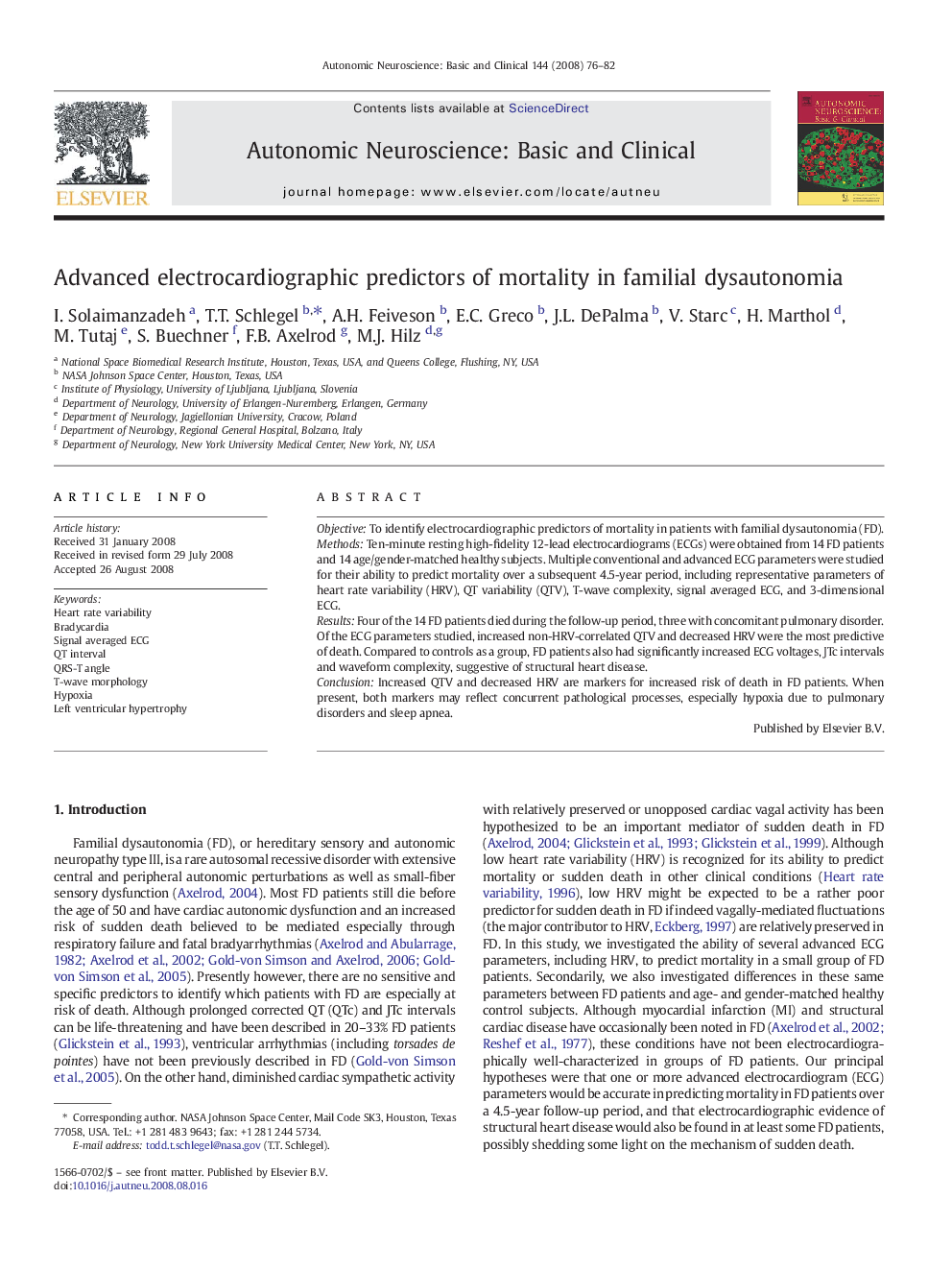| Article ID | Journal | Published Year | Pages | File Type |
|---|---|---|---|---|
| 3035505 | Autonomic Neuroscience | 2008 | 7 Pages |
ObjectiveTo identify electrocardiographic predictors of mortality in patients with familial dysautonomia (FD).MethodsTen-minute resting high-fidelity 12-lead electrocardiograms (ECGs) were obtained from 14 FD patients and 14 age/gender-matched healthy subjects. Multiple conventional and advanced ECG parameters were studied for their ability to predict mortality over a subsequent 4.5-year period, including representative parameters of heart rate variability (HRV), QT variability (QTV), T-wave complexity, signal averaged ECG, and 3-dimensional ECG.ResultsFour of the 14 FD patients died during the follow-up period, three with concomitant pulmonary disorder. Of the ECG parameters studied, increased non-HRV-correlated QTV and decreased HRV were the most predictive of death. Compared to controls as a group, FD patients also had significantly increased ECG voltages, JTc intervals and waveform complexity, suggestive of structural heart disease.ConclusionIncreased QTV and decreased HRV are markers for increased risk of death in FD patients. When present, both markers may reflect concurrent pathological processes, especially hypoxia due to pulmonary disorders and sleep apnea.
